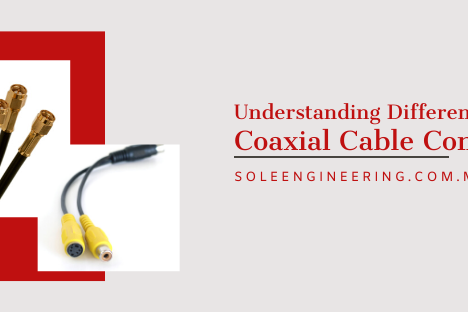Connectors are small metallic cylindrical bolt like objects designed to connect the coaxial cables with devices. They are designed to minimize loss of signal and ensure the best shielding while the connection is established. A high-quality connector will be able to deliver a reliable long-lasting connection.
Basic terminology about coaxial connectors
If you are new to connectors you need to introduce yourself with some terms like jack, plug, and standard or reverse polarity.
Jack is the inlet in which you intend to connect the cable and plug is the connector attached the cable which will fit with a jack to establish the connection. The polarity of connectors refers to the categorisation of connectors in terms of male and female. A male connector has a metal pin protruding in the centre which will fit in the jack, while a female connector has a hole in the centre for receiving the connection from the jack. Sometimes a male connector may have the whole and a female connector may possess a protruding pin in the center, this is called reversed polarity. Reversed polarity only switches the appearance of the connector but it will not have any impact on the polarity of the signals running through the cable. Many find it difficult to differentiate between the standard or reversed polarity. More recently developed connectors may have threads inside or outside the shell to minimize leakage and allow the connectors to work at higher frequencies up to 12 GHz.
Identifying Different Types of Coaxial Cable Connectors
It is very important to understand and be able to distinguish between different types of connectors if you are working on a coaxial cable assembly and plan to specify or purchase the equipment yourself. It is also significant that the connector should be the right fit for the size of the coaxial cable to ensure a secure connection. Most widely the connectors are categorised as male and female, but they can also be sexless or mounted flush rather than mating. Let’s jump into details now.
BNC (Bayonet Neill-Concelman) connectors are used at low frequencies, typically below 4 GHz and suitable for the most types of coax cable. They are made in both 50 ohm and 75-ohm versions and are commonly used for military surveillance, radios and security cameras.
TNC (Threaded Neil-Concelman) is an advanced weatherproof version of BNC that uses threads to secure itself and is frequently used for outdoor applications like antennas and cell towers. A reverse polarity version of TNC connector is also available in the market.
F-type connectors are most commonly seen on the backs of televisions and are used for antenna, cable, and satellite television as well as a cable modem. They are most compatible with RG59, RG6, and RG11 cable, and some other RF cables. If you are interested in learning how to instal an F-connector step by step, click here.
N-series connectors are a 50-ohm connector originally developed for military use. Modern N-series connectors can handle frequencies up to 18 GHz and are also available in reverse polarity.
UHF connectors are 50-ohm connectors mostly seen on RG58 and RG8 as well as their LMR equivalents. The male type is referred to as PL-259 and female type is referred to as SO-239. Applications like cellphones which have limited space available use a Mini-UHF version.
SMA (Subminiature A) is a 50 ohms relatively small-sized threaded connector It is compatible with RG58 or thinner coax at frequencies up to 24 GHz and is environmentally sealed. Some reverse polarity versions are also available.
SMB (Subminiature B) is even tinier than SMA and is used with high-frequency equipment built for superior electrical performance from DC to 4 GHz. For industrial and telecommunications equipment they are one of the most popular RF/microwave connector variations, with a snap-on connection for semi-rigid cables with infrequent connections.
QMA connectors are a modern and upgraded version of SMA connectors that offer the quick-lock and quick-disconnect feature with the same internal construction. This makes them ideal for industrial and communications applications, as well as cable wiring, assembly, and repair.







